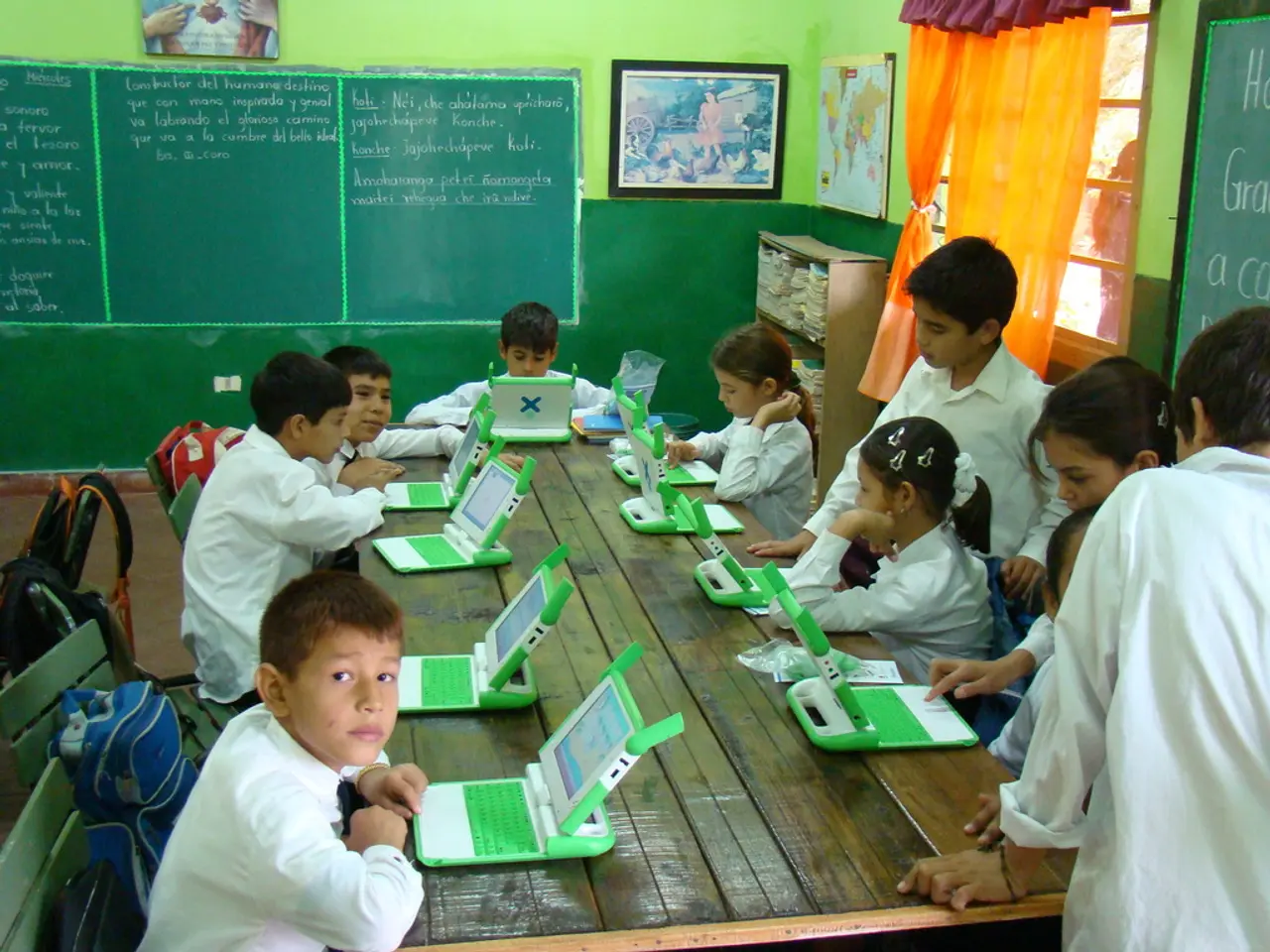Eductional Technology (Edtech) in Schools Puts Student Privacy in Jeopardy. Here's an Alternative Approach
Schools are being urged to take a closer look at the apps and technologies they use, as a recent study by Internet Safety Labs has found that many of these tools pose significant privacy risks.
Lisa LeVasseur, the executive director and research director for Internet Safety Labs, has recommended that every school should develop a technology vetting process. This process is crucial in ensuring the protection of student privacy, especially in light of the study's findings.
The research revealed that 78% of the apps required or recommended by schools were classified as "very high risk" in terms of privacy. This risk was particularly pronounced in schools located in socioeconomically challenged areas. These schools had the highest rate of "unsafe apps with digital ads," and "apps with behavioral ads."
LeVasseur suggests that schools with funding available should create a comprehensive cybersecurity plan for schools. This plan should include the creation of a dedicated software management position to oversee technologies. This role would focus on maintaining data security, ensuring compliance with privacy laws, and safeguarding student communication by using encrypted and privacy-compliant platforms.
In addition to this, LeVasseur provides four cybersecurity tips for schools. One of these tips is to limit the overall amount of tech tools used in a district. This makes it easier to monitor and meet privacy standards.
Using fewer apps also makes managing student privacy easier, according to LeVasseur. Schools can examine apps using the Internet Safety Labs' App Microscope Tool, and websites using the EFF's Privacy Badger and The Markup's Blacklight tools.
Internet Safety Labs also recommends verifying technology COPPA Safe Harbor Certification through the FTC's Safe Harbor site, iKeepSafe.org, my.privo.com, and KidSafesealcom.
Several U.S. school districts have already established dedicated software management positions in recent years to better oversee student privacy protections. While specific district names are not detailed in the search results, these roles have been instrumental in ensuring data security, compliance with privacy laws, and safeguarding student communication.
LeVasseur mentions the need for a process for "off the shelf" tools in addition to any existing processes for licensed technology. She believes that these positions will start to be added in districts going forward.
The study also found that 79% of the apps collected student location data. This underscores the importance of a thorough vetting process for any app or technology used in schools.
Some of these strategies are free, according to LeVasseur, making it accessible for schools of all funding levels to implement better privacy protections. The recommended strategies for better protecting student privacy are available and schools are encouraged to adopt them.
Read also:
- Peptide YY (PYY): Exploring its Role in Appetite Suppression, Intestinal Health, and Cognitive Links
- Toddler Health: Rotavirus Signs, Origins, and Potential Complications
- Digestive issues and heart discomfort: Root causes and associated health conditions
- House Infernos: Deadly Hazards Surpassing the Flames





